Nguyen Linh Trung
Securing MIMO Wiretap Channel with Learning-Based Friendly Jamming under Imperfect CSI
Dec 12, 2023



Abstract:Wireless communications are particularly vulnerable to eavesdropping attacks due to their broadcast nature. To effectively deal with eavesdroppers, existing security techniques usually require accurate channel state information (CSI), e.g., for friendly jamming (FJ), and/or additional computing resources at transceivers, e.g., cryptography-based solutions, which unfortunately may not be feasible in practice. This challenge is even more acute in low-end IoT devices. We thus introduce a novel deep learning-based FJ framework that can effectively defeat eavesdropping attacks with imperfect CSI and even without CSI of legitimate channels. In particular, we first develop an autoencoder-based communication architecture with FJ, namely AEFJ, to jointly maximize the secrecy rate and minimize the block error rate at the receiver without requiring perfect CSI of the legitimate channels. In addition, to deal with the case without CSI, we leverage the mutual information neural estimation (MINE) concept and design a MINE-based FJ scheme that can achieve comparable security performance to the conventional FJ methods that require perfect CSI. Extensive simulations in a multiple-input multiple-output (MIMO) system demonstrate that our proposed solution can effectively deal with eavesdropping attacks in various settings. Moreover, the proposed framework can seamlessly integrate MIMO security and detection tasks into a unified end-to-end learning process. This integrated approach can significantly maximize the throughput and minimize the block error rate, offering a good solution for enhancing communication security in wireless communication systems.
On the Semi-Blind Mutually Referenced Equalizers for MIMO Systems
Nov 01, 2023



Abstract:Minimizing training overhead in channel estimation is a crucial challenge in wireless communication systems. This paper presents an extension of the traditional blind algorithm, called "Mutually referenced equalizers" (MRE), specifically designed for MIMO systems. Additionally, we propose a novel semi-blind method, SB-MRE, which combines the benefits of pilot-based and MRE approaches to achieve enhanced performance while utilizing a reduced number of pilot symbols. Moreover, the SB-MRE algorithm helps to minimize complexity and training overhead and to remove the ambiguities inherent to blind processing. The simulation results demonstrated that SB-MRE outperforms other linear algorithms, i.e., MMSE, ZF, and MRE, in terms of training overhead symbols and complexity, thereby offering a promising solution to address the challenge of minimizing training overhead in channel estimation for wireless communication systems.
Collaborative Learning for Cyberattack Detection in Blockchain Networks
Mar 21, 2022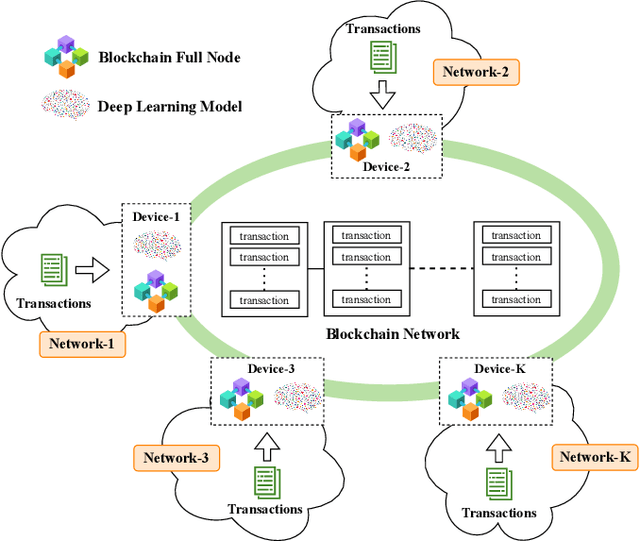
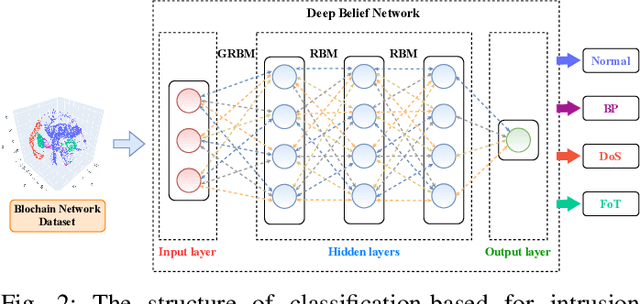
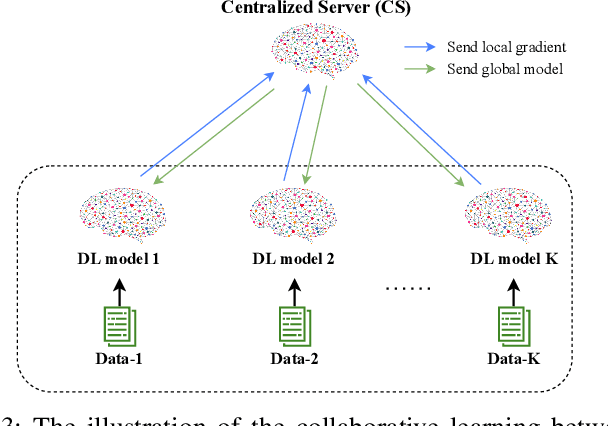
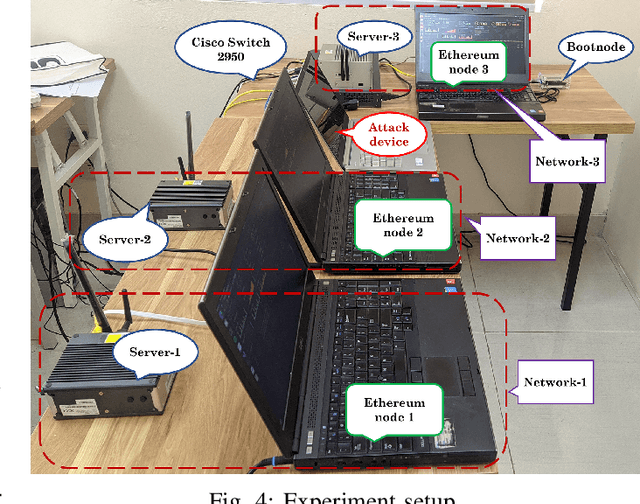
Abstract:This article aims to study intrusion attacks and then develop a novel cyberattack detection framework for blockchain networks. Specifically, we first design and implement a blockchain network in our laboratory. This blockchain network will serve two purposes, i.e., generate the real traffic data (including both normal data and attack data) for our learning models and implement real-time experiments to evaluate the performance of our proposed intrusion detection framework. To the best of our knowledge, this is the first dataset that is synthesized in a laboratory for cyberattacks in a blockchain network. We then propose a novel collaborative learning model that allows efficient deployment in the blockchain network to detect attacks. The main idea of the proposed learning model is to enable blockchain nodes to actively collect data, share the knowledge learned from its data, and then exchange the knowledge with other blockchain nodes in the network. In this way, we can not only leverage the knowledge from all the nodes in the network but also do not need to gather all raw data for training at a centralized node like conventional centralized learning solutions. Such a framework can also avoid the risk of exposing local data's privacy as well as the excessive network overhead/congestion. Both intensive simulations and real-time experiments clearly show that our proposed collaborative learning-based intrusion detection framework can achieve an accuracy of up to 97.7% in detecting attacks.
Deep Transfer Learning: A Novel Collaborative Learning Model for Cyberattack Detection Systems in IoT Networks
Dec 02, 2021
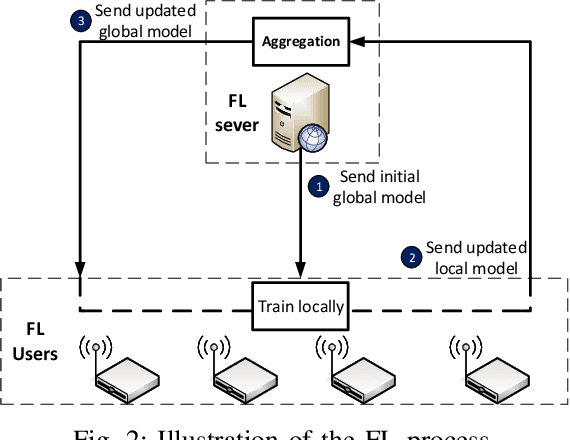

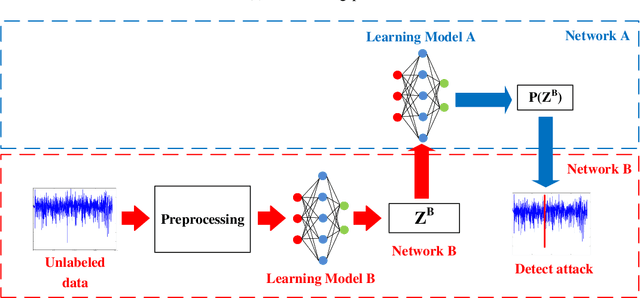
Abstract:Federated Learning (FL) has recently become an effective approach for cyberattack detection systems, especially in Internet-of-Things (IoT) networks. By distributing the learning process across IoT gateways, FL can improve learning efficiency, reduce communication overheads and enhance privacy for cyberattack detection systems. Challenges in implementation of FL in such systems include unavailability of labeled data and dissimilarity of data features in different IoT networks. In this paper, we propose a novel collaborative learning framework that leverages Transfer Learning (TL) to overcome these challenges. Particularly, we develop a novel collaborative learning approach that enables a target network with unlabeled data to effectively and quickly learn knowledge from a source network that possesses abundant labeled data. It is important that the state-of-the-art studies require the participated datasets of networks to have the same features, thus limiting the efficiency, flexibility as well as scalability of intrusion detection systems. However, our proposed framework can address these problems by exchanging the learning knowledge among various deep learning models, even when their datasets have different features. Extensive experiments on recent real-world cybersecurity datasets show that the proposed framework can improve more than 40% as compared to the state-of-the-art deep learning based approaches.
 Add to Chrome
Add to Chrome Add to Firefox
Add to Firefox Add to Edge
Add to Edge